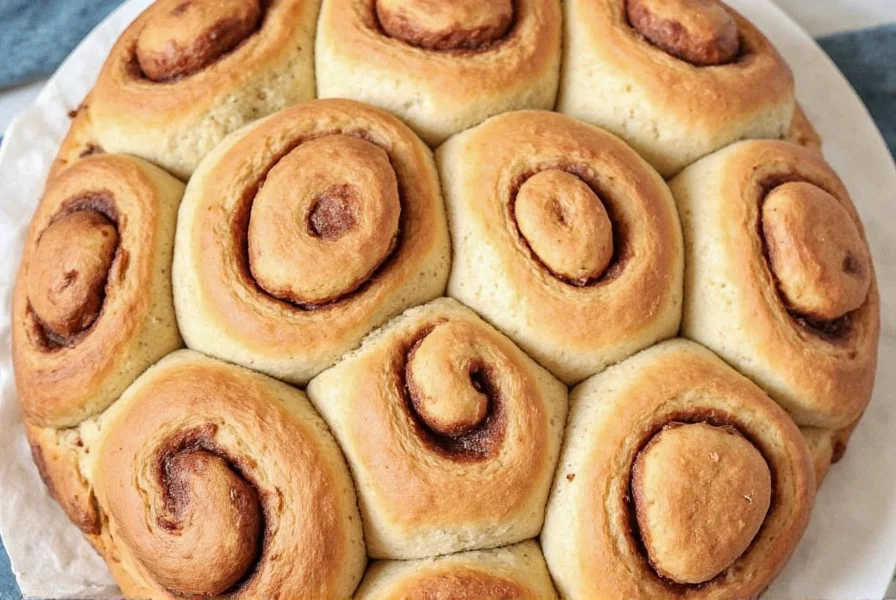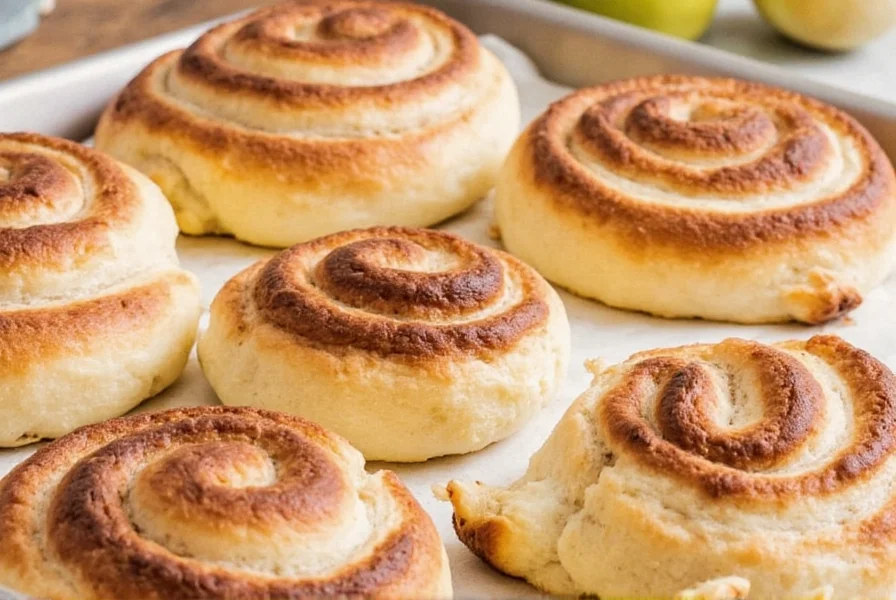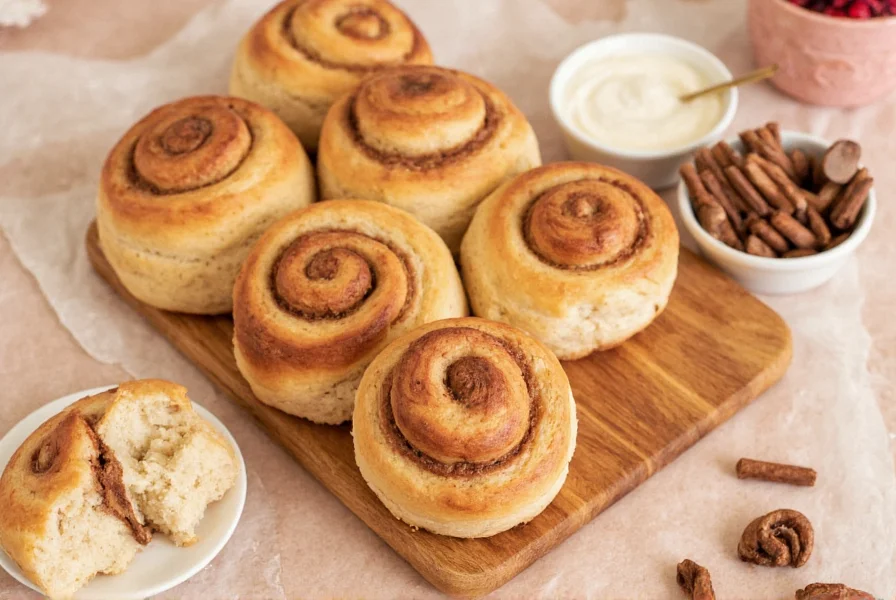Yes, you can make delicious vegan cinnamon buns that are soft, fluffy, and indistinguishable from traditional versions. This dairy-free cinnamon bun recipe uses plant-based milk, vegan butter, and a simple egg substitute to create perfectly spiced rolls with a rich cinnamon filling and smooth vegan cream cheese frosting. The secret to success lies in the proper yeast activation and using the right vegan butter alternative that mimics dairy fat content.
Creating authentic-tasting vegan cinnamon buns requires understanding how plant-based ingredients interact in baking. Many home bakers struggle with vegan pastries turning out dense or lacking that signature pull-apart texture. The solution? A carefully balanced recipe that accounts for the unique properties of vegan ingredients while maintaining the classic cinnamon bun experience everyone loves.
The Science Behind Perfect Vegan Cinnamon Buns
Vegan baking presents specific challenges when making yeast-raised pastries. Traditional cinnamon buns rely on dairy milk's proteins and butter's fat content for structure and flavor. In our dairy-free cinnamon buns from scratch approach, we replace these with strategic substitutions that maintain the chemical reactions necessary for proper rising and texture.
Plant-based milks vary significantly in protein and fat content. For this best vegan cinnamon bun recipe, we recommend full-fat coconut milk or soy milk, which provide the necessary proteins for gluten development without the curdling issues that can occur with acidic ingredients. The vegan butter alternative must contain at least 80% fat content to properly laminate the dough layers.

Ingredients for Homemade Vegan Cinnamon Buns
This easy vegan cinnamon roll recipe serves 12 and requires standard baking equipment. All ingredients should be at room temperature unless specified.
| Category | Ingredients | Measurement |
|---|---|---|
| Dough | Unsweetened plant-based milk (soy or coconut) | 1 cup (240ml) |
| Dough | Vegan butter, melted | ⅓ cup (75g) |
| Dough | Granulated sugar | ¼ cup (50g) |
| Dough | All-purpose flour | 3½ cups (440g) |
| Filling | Brown sugar, packed | 1 cup (200g) |
| Filling | Cinnamon | 2 tbsp |
| Filling | Vegan butter, softened | 3 tbsp (45g) |
| Frosting | Vegan cream cheese | 4 oz (115g) |
| Frosting | Powdered sugar | 1 cup (120g) |
Step-by-Step Instructions for Soft Vegan Cinnamon Rolls
Follow these detailed steps for the perfect plant-based cinnamon roll recipe that delivers bakery-quality results every time.
Dough Preparation
- Warm plant-based milk to 105-115°F (40-46°C) - crucial for proper yeast activation in your eggless cinnamon roll dough
- Dissolve yeast and 1 teaspoon sugar in warm milk; let sit 5-10 minutes until foamy
- Mix melted vegan butter, remaining sugar, salt, and plant milk mixture in large bowl
- Gradually add flour, ½ cup at a time, until dough pulls away from sides
- Knead 5-7 minutes until smooth and elastic (dough will be slightly stickier than dairy versions)
- Place in greased bowl, cover, and let rise in warm place for 1-1.5 hours or until doubled
Rolling and Baking
- Roll dough into 16x12 inch rectangle on floured surface
- Spread softened vegan butter evenly over dough
- Mix brown sugar and cinnamon; sprinkle evenly over buttered dough
- Tightly roll dough starting from long edge; pinch seam to seal
- Cut into 12 equal pieces using dental floss for clean cuts
- Place in greased 9x13 inch pan; cover and let rise 30-45 minutes
- Bake at 375°F (190°C) for 22-25 minutes until golden brown

Professional Tips for Vegan Cinnamon Bun Success
Even experienced bakers encounter challenges with vegan cinnamon bun recipe without dairy. These expert tips ensure perfect results:
- Yeast activation is critical - If your milk is too hot, it will kill the yeast; too cold and it won't activate properly
- Don't skip the second rise - This develops the signature soft texture in homemade vegan cinnamon buns
- Use quality vegan butter - Brands with higher fat content (like Miyoko's or Melt) work best for flaky layers
- Room temperature ingredients - Cold ingredients prevent proper gluten development in eggless dough
- Don't overbake - Vegan pastries continue cooking slightly after removal from oven
Variations and Dietary Adaptations
This versatile vegan cinnamon roll recipe accommodates various dietary needs while maintaining excellent texture and flavor.
Gluten-free option: Substitute with 1:1 gluten-free flour blend and add 1 teaspoon xanthan gum. Expect slightly denser texture but still delicious results.
Nut-free version: Ensure your plant milk is nut-free (soy, oat, or coconut work well). Most vegan butters are nut-free, but always check labels.
Lower sugar option: Reduce filling sugar by 25% and use sugar-free vegan cream cheese for frosting. The rolls will be less sweet but still flavorful.
Storage and Serving Recommendations
Vegan cinnamon buns taste best fresh but store well with proper technique. Cool completely before storing to prevent sogginess.
Room temperature: Keep in airtight container for up to 2 days. Reheat individual buns for 15 seconds in microwave before serving.
Freezing: Freeze unbaked rolls on parchment-lined baking sheet, then transfer to freezer bags. When ready to bake, thaw overnight in refrigerator and proceed with second rise and baking.
Serve warm with additional vegan butter or our smooth vegan cream cheese frosting for the ultimate breakfast experience. These dairy-free cinnamon buns also make an impressive brunch centerpiece or holiday treat.
Frequently Asked Questions
Can I make vegan cinnamon buns without yeast?
Yes, you can create yeast-free vegan cinnamon buns using baking powder and baking soda as leavening agents. Replace the yeast dough with a biscuit-style dough using 2 cups flour, 1 tablespoon baking powder, ½ teaspoon baking soda, ¼ teaspoon salt, ⅓ cup vegan butter, and 1 cup plant milk. The texture will be more like cinnamon rolls than traditional pull-apart buns, but still delicious.
Why did my vegan cinnamon buns turn out dense?
Dense vegan cinnamon buns typically result from improper yeast activation, over-flouring the dough, or insufficient rising time. Ensure your plant milk is between 105-115°F when activating yeast, measure flour by weight or spoon-and-level method, and allow full rising time in a warm environment. Vegan dough often requires slightly longer rising than dairy versions due to different protein structures.
What's the best vegan butter for cinnamon buns?
For the best results in your vegan cinnamon bun recipe, use a vegan butter with at least 80% fat content, such as Miyoko's Creamery, Melt Organic, or Country Crock Plant Butter. These provide the proper fat-to-water ratio needed for flaky layers and proper browning. Avoid low-fat or oil-based spreads as they contain too much water, which creates steam pockets that disrupt the dough structure.
How do I prevent vegan cinnamon buns from drying out?
To maintain moisture in your homemade vegan cinnamon buns, don't overbake them (remove when just golden), brush with melted vegan butter immediately after baking, and store in an airtight container. Adding 1-2 tablespoons of aquafaba (chickpea brine) to the dough helps retain moisture without altering flavor. For best texture, reheat individual buns briefly before serving rather than keeping the entire batch warm for extended periods.











 浙公网安备
33010002000092号
浙公网安备
33010002000092号 浙B2-20120091-4
浙B2-20120091-4